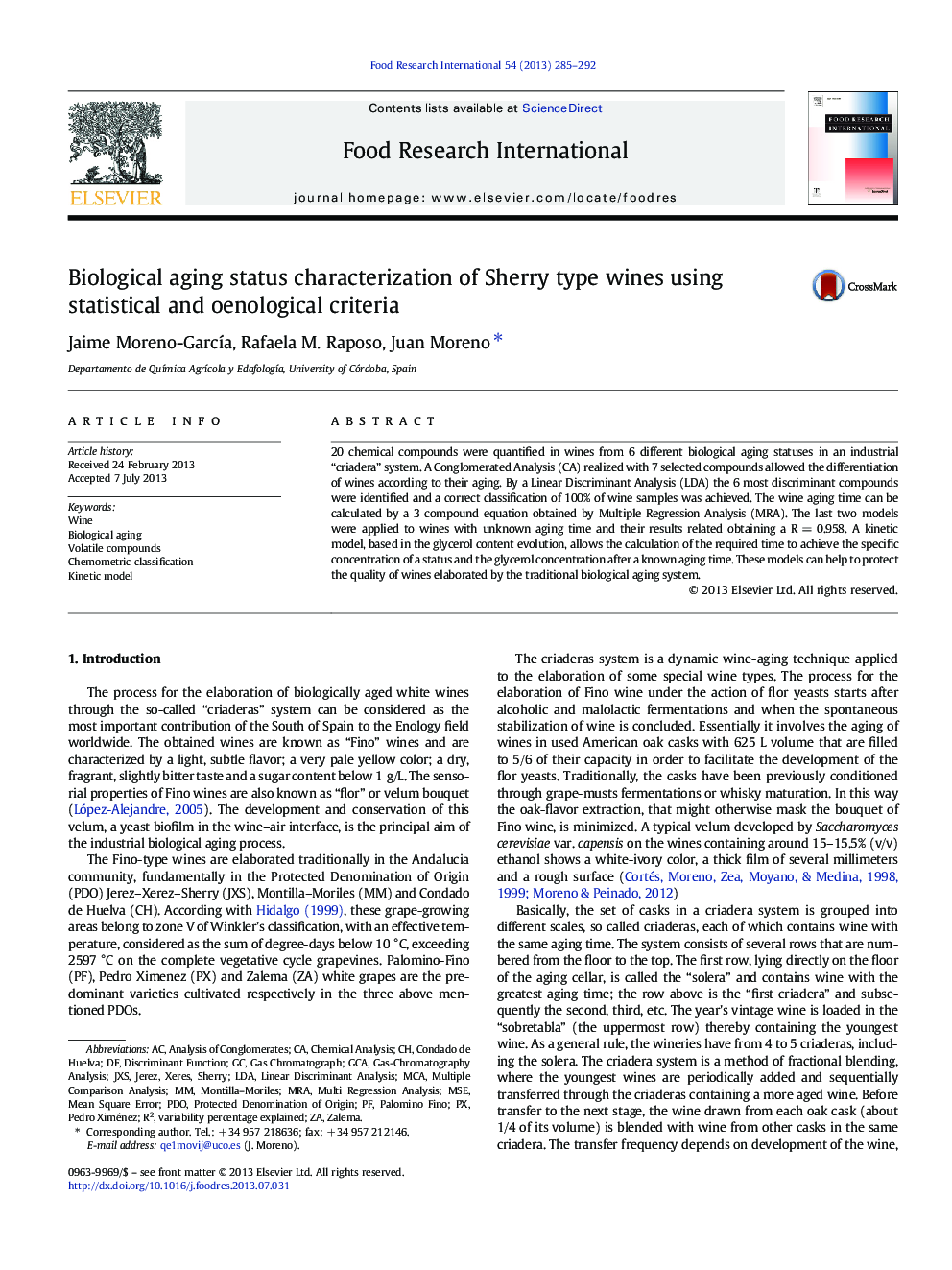| Article ID | Journal | Published Year | Pages | File Type |
|---|---|---|---|---|
| 6397252 | Food Research International | 2013 | 8 Pages |
â¢Seven compounds are selected to build models for biological wine aging.â¢A classification by Linear Discriminant Analysis based in 5 compounds is obtained.â¢The aging time of wines can be calculated by an equation including 3 compounds.â¢A linear correlation (R = 0.958) is found between data from two before models.â¢A kinetic model is proposed on the basis of glycerol concentration decreasing rate.
20 chemical compounds were quantified in wines from 6 different biological aging statuses in an industrial “criadera” system. A Conglomerated Analysis (CA) realized with 7 selected compounds allowed the differentiation of wines according to their aging. By a Linear Discriminant Analysis (LDA) the 6 most discriminant compounds were identified and a correct classification of 100% of wine samples was achieved. The wine aging time can be calculated by a 3 compound equation obtained by Multiple Regression Analysis (MRA). The last two models were applied to wines with unknown aging time and their results related obtaining a RÂ =Â 0.958. A kinetic model, based in the glycerol content evolution, allows the calculation of the required time to achieve the specific concentration of a status and the glycerol concentration after a known aging time. These models can help to protect the quality of wines elaborated by the traditional biological aging system.
